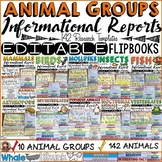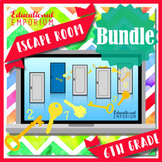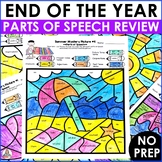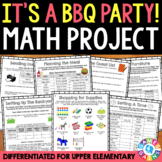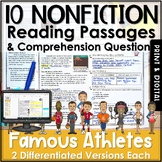136 results
6th grade chemistry centers for Microsoft Word

Name that Change! Physical and Chemical Changes Stations
6 Stations for Identifying Physical or Chemical Changes
Water and Salt Experiment
Vinegar and Baking Soda Experiment
Penny and Vinegar Experiment
Making Stars
Egg Dyeing with Food Coloring
Identify the change using picture clues
The activities for each station should only take a few minutes. Students should discuss the evidence that supports what change is taking place.
Subjects:
Grades:
3rd - 6th
Types:

Endothermic vs. Exothermic Reaction Lab
In this lab, students explore the difference between an endothermic and exothermic reaction through by combining hydrogen peroxide & yeast (part 1) and baking soda & vinegar (part 2). This is a great lab to show the differences in the release and absorption of heat. Includes all steps of the scientific method, along with a full rubric for assessment.
Subjects:
Grades:
6th - 9th
Types:

An Introduction to Chemistry for Elementary Students
How many of us failed Chemistry when we were in school?
It was difficult, confusing, and sometimes downright BORING!
But in reality, without Chemistry we all would fall apart! Chemistry is what holds us together and it is all around us. Our job as teachers is to help younger students understand that Chemistry is both fun and engaging!
This introductory unit is designed to be just that for younger students aged 8-12, and it was written with young minds in mind!
It includes over ten lessons
Subjects:
Grades:
3rd - 7th
Types:

Ooblek Lab
This is a short lab to show the Law of Conservation of Mass. Students will measure corn starch and water and measure the masses. Although a fun new substance is made the mass will stay the same. There is a page with data table included and another copy where students must complete their own data table.
Subjects:
Grades:
5th - 9th
Types:
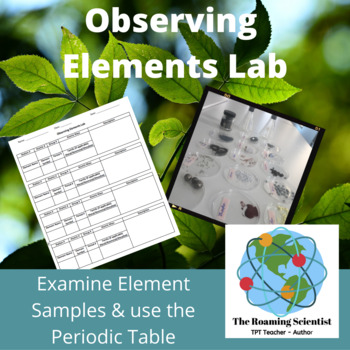
Observing Elements Lab
This lab can be used in a unit about the Periodic Table or as a review for students as they begin to study more advanced chemistry. The fully editable lab sheet can be used to focus on a variety of properties of both elements and the Periodic Table: how to find information on the table including group number, period number, atomic number, atomic mass and classification of elements (metal, non-metal, metalloid) as well as the family (halogen, alkali metal, transition metal etc.). It can also be u
Subjects:
Grades:
6th - 10th
Types:
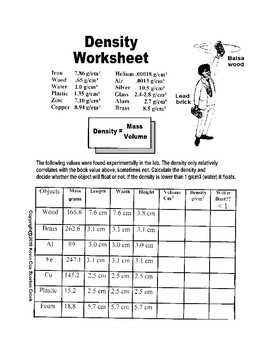
Density Worksheet
For those that want to do a lab. Here is a quick worksheet for you to do. For those that don't have time to do the density lab, this is the raw data of those that have done the lab in my classroom. Like all labs, the results generally match the accepted values. The students practice using the density formula to calculate its value. They then decide if it would float in water (density less than 1 gm/cm3). The generally accepted values of this substances are given but like most actual labs results
Subjects:
Grades:
5th - 12th
Types:
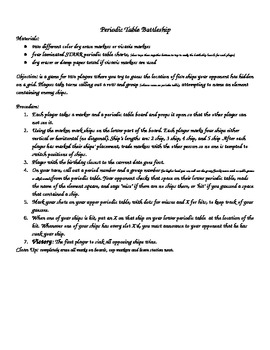
Periodic Table Battleship
This is a great way to get kids to practice using the words period and group while getting acquainted with the periodic table. At a higher level you can have them practice the family names such as Noble gases or Alkali metals instead of Group numbers.
Another hint for memory is to write the words in their notes this way:
G
R
O
U
PERIOD
so they can have a visual reminder of which one goes up and down and which one goes side to side
Subjects:
Grades:
5th - 10th
Types:
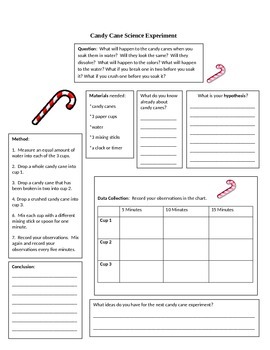
Candy Cane Science Experiment
This science activity can be used with the whole class, in centers, during a class party or in small groups. It is a hands-on science experiment. Students dissolve candy canes in water and follow the scientific method while doing it. Students will write a hypothesis, collect data, and form conclusions. In my class, we do this activity as part of the "holiday" party. They think they are having fun...but they are doing science and learning! Inquiry based.
Grades:
PreK - 6th
Types:
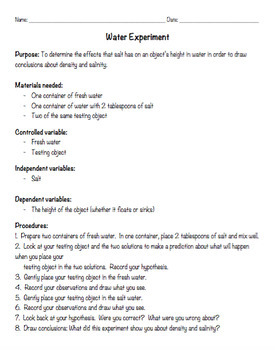
Salinity and Density of Water Experiment
Students will work through this water experiment in order to test objects in fresh water and salt water to determine the reactions (whether it floats or sinks, time it takes for it to sink, how far it sinks, etc.). This experiment organizer will help students organize their hypothesis, observations, and conclusions.Terms of Use:The content of this purchase may be used for personal and classroom use only. This license is not intended for use by multiple users, including within school districts,
Subjects:
Grades:
1st - 8th
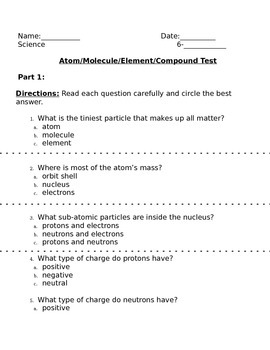
Atom Molecule, Element, Compound Test
This test assesses students' knowledge on atoms, the atomic structure, molecules and how they bond together, elements, periodic table, element cell, and Bohr models. Through Part One's multiple choice questions and Part Two's short response answers, students will be able to prove knowledge learned on these topics through the use of this assessment. Enjoy!
Subjects:
Grades:
4th - 7th
Types:
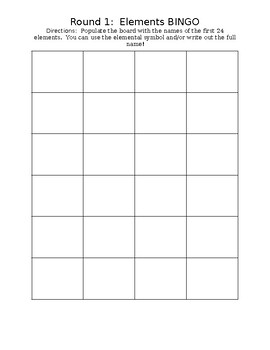
Get to Know the Elements! Bingo to practice element recognition for beginners
How is it that K represents potassium and Na represents sodium? Instead of discussing the origins of the symbols, this activity allows students a fun way to practice identifying the elements. The game is set-up to practice identifying the first 24 elements, but can easily be altered to practice elements found in different groups or periods. Students will randomly write the elements in their bingo board and then attempt to earn a bingo (be sure to choose the correct winning bingo type prior to
Subjects:
Grades:
6th - 9th
Types:
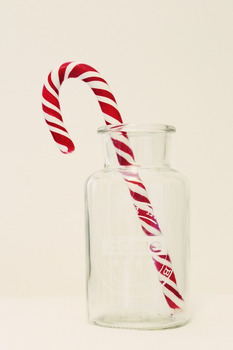
Candy Cane Science Experiment
Student Worksheet . Place candy canes in clear cups filled with various liquids (water, oil, vinegar, baking soda, etc.) Students make predictions and record outcomes.
*This version uses the font "DK Cool Crayon". If you do not have this font installed on your computer, you can either highlight All and change to a font of your choice, or see my other version, "Candy Cane Science Experiment (Comic Sans font).
Subjects:
Grades:
3rd - 6th
Types:
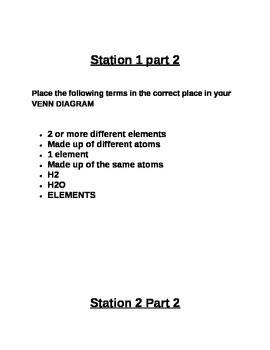
Stations for Elements, Compounds, Organic vs Inorganic and Energy
There are 4 stations for this review station lab. The more sets of stations you print out the smaller your groups can be. Students will rotate around the stations every 5-8 minutes depending on students readiness level over the concept. Students will use the Student answer document (listed free in my store) to answer the questions on the table. This is student centered and the role of the teacher is to guide them in the right direction for rotations and to answer misconceptions. Students will vi
Subjects:
Grades:
5th - 12th
Types:
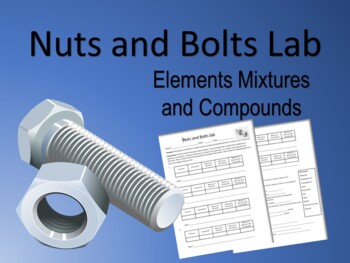
Elements, Mixtures, Compounds Lab
This lab is a GREAT way for students to visualize elements, mixtures, and compounds. Students will investigate a few numbered dishes, each that has a specific combination of nuts, bolts, and washers assembled or not assembled to represent chemical bonds. Students then investigate the contents of the dish, and determine if the dish best represents an element, mixture, compound, or mixture of compounds, or mixture of compounds and elements. The end of the activity has a great follow up with though
Subjects:
Grades:
5th - 11th
Types:
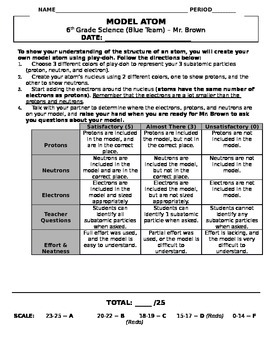
Play-Doh Model Atom
In this assignment, students use play-doh to create a model atom. They need to include the correct number of each subatomic particle, and relative size of each particle is included as well. A full rubric is included for assessment. This was a huge hit with my 6th grade classes.
Subjects:
Grades:
6th - 9th
Types:
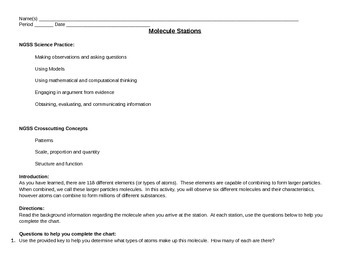
NGSS Molecules Stations/Centers
This activity is based around the Next Generation Science Standards on molecules.
In this activity, students move from station to station to observe ball and stick models of different molecules. Students use their observations to complete a chart and then answer questions at the end. The questions are based around the evidence statements that students should be familiar with.
This download includes the activity, the pictures and keys that I put at each station, and my lesson plans. This end
Subjects:
Grades:
6th - 11th
Types:
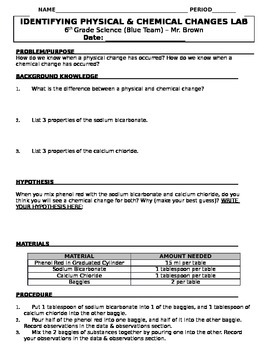
Identifying Physical & Chemical Changes Lab
In this lab, students mix phenol red with calcium chloride (driveway salt) and sodium bicarbonate (baking soda) to determine what kind of change occurs with the mixtures. The results are very cool - one mixture turns a different color, and the other gets hot. All steps of the scientific method are included, along with a full rubric for assessment.
Subjects:
Grades:
6th - 9th
Types:

Chemical & Physical Changes Lab
This item is ready to be printed and used in your chemistry lab. 6 hands on stations physical and chemical changes/reactions with clear directions, so that students can be self directed during activity. With minimal teacher intervention necessary! Students will describe the reactants before mixing, mix materials and assess if the reaction was a physical or chemical reaction and explain what information they have to justify their answer.Easy to obtain chemicals for easy preparation! This resource
Subjects:
Grades:
5th - 10th
Types:
NGSS:
MS-PS1-2
, MS-PS1-6
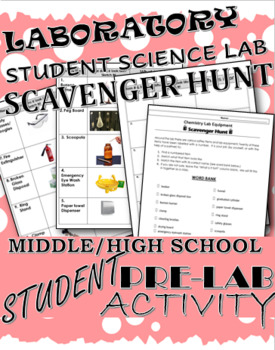
Middle Years/High School Lab Equipment Scavenger Hunt
Middle Years/High School Lab Equipment Scavenger Hunt Regardless of what level students are at – if students work in a laboratory – students should always be familiar with layout of the lab, including and especially the location of First Aid equipment. Whether it will be students’ first taste of the lab or fourth, every year, I take 1-3 days to go through safety procedures in the laboratory (that’s right, even my grade 12’s who may have already been through lab safety thrice before!!). We always
Subjects:
Grades:
6th - 12th, Higher Education, Adult Education
Types:
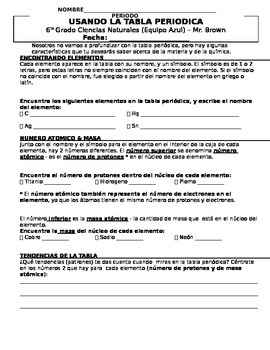
Using the Periodic Table (DUAL LANGUAGE SPANISH)
In this guided assignment, students use the periodic table to find characteristics of example elements. Included are atomic mass, atomic number (number of protons), symbol, and name of the element. The sheet also explains how to find each of these, along with the examples that students have to find.
**This assignment is in Spanish - Find the English version here: http://www.teacherspayteachers.com/Product/Using-the-Periodic-Table-1188492
Subjects:
Grades:
6th - 9th

Lab: Increasing Reaction Rates
In this lab, students can explore the affect of concentration on a reaction rate. Students observe the reaction between vinegar and baking soda when vinegar is a 100% solution, 50% solution and 25% solution. The lab can be edited to accommodate higher or lower grade levels and the amount of observations needed.
Included: student lab instructions, partial answer key, teacher notes on implementation and prior knowledge
Subjects:
Grades:
6th - 9th
Types:
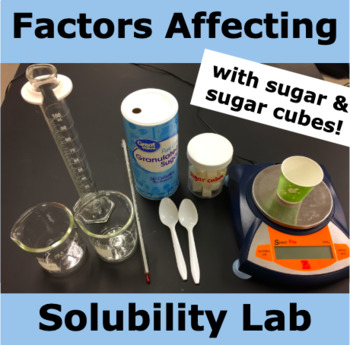
Factors Affecting Solubility Student Inquiry Lab (with sugar & sugar cubes)
Students will design 3 short experiments to investigate how agitation (stirring), particle size (sugar vs sugar cubes) and temperature affect solubility. I've done this lab for years with my 10th grade on-level Chemistry students, but it could be done with different ages. Students really benefit from practicing writing procedures and developing their own experiments.I've also included GOOGLE SLIDES to introduce the lab and show bad examples of lab procedures for students to discuss and correct b
Subjects:
Grades:
5th - 12th
Types:

Microscope Slides Recording Form
This handout for students is for recording images that students observe when viewing slides through a microscope. Students describe the slide/object they are viewing and then draw pictures of the object at .10, .25, and .65 powers of magnification.
Subjects:
Grades:
4th - 8th
Types:

Atoms: Fun & Interactive Story about Atomic Structure and Particle Charges
Are your students finding it difficult to commit to memory the locations and charges of electrons, protons, and neutrons in atoms? This short, interactive, and entertaining fictional, myth-like story about "how the atomic particles came to be where they are in an atom" may be just what they need! I developed this story for my struggling students and it worked like magic! This will help your students recall that the nucleus of an atom holds its protons and neutrons (and the protons are positively
Subjects:
Grades:
5th - 8th
Types:
Showing 1-24 of 136 results




